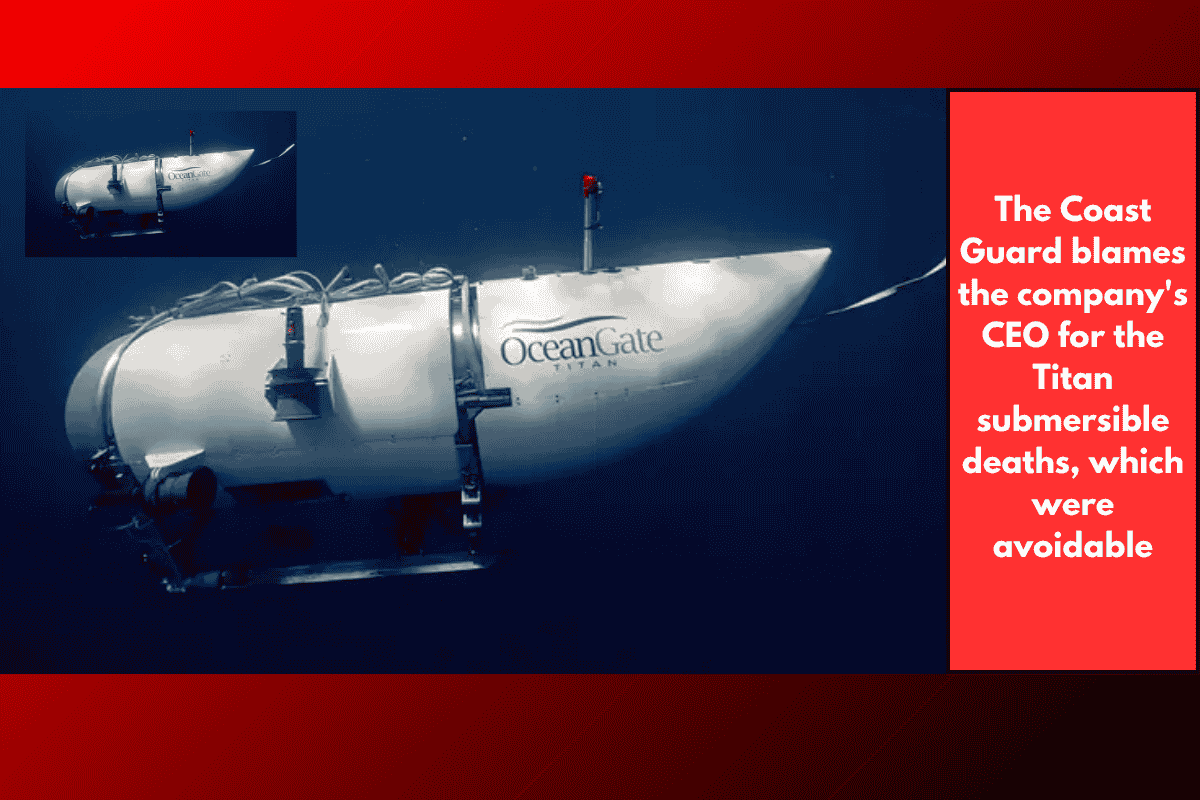Charleston, S.C. – Two years after the tragic implosion of the Titan submersible, which resulted in the loss of five lives during a dive to view the Titanic wreckage off the coast of Newfoundland, Canada, the U.S. Coast Guard has issued a scathing report condemning the incident as preventable.
Key Findings from the Coast Guard’s Report
The Titan Marine Board Investigation, led by Jason Neubauer, found multiple contributing factors that led to the tragedy. According to Neubauer, “This marine casualty and the loss of five lives was preventable.”
Among the most significant factors were:
Negligence by Stockton Rush: The CEO of OceanGate, Stockton Rush, who also designed and piloted the Titan, ignored multiple safety warnings, skirted regulations, and acted negligently in his handling of the submersible’s operations. The report suggests that had Rush survived the implosion, he would have likely faced criminal charges.
Submersible Design Flaws: The Titan was built with cheaper, carbon fiber instead of a more durable and commonly used steel alloy for its hull. This was one of the key design flaws that contributed to the sub’s catastrophic failure.
Lack of Certification and Maintenance: The submersible did not undergo proper certification, maintenance, or inspections, which left it vulnerable to failure. This further compounded the risks associated with its operation.
Toxic Work Culture at OceanGate: The report highlighted a toxic work environment at OceanGate, with former employees testifying that the company routinely prioritized profits over safety and silenced critics.
Testimony from Former Employees
The Coast Guard’s findings closely mirror the testimonies given by former OceanGate employees during a public hearing in Charleston last year. David Lochridge, a former OceanGate engineer, testified that he had warned Rush about the Titan’s safety issues over a decade ago, stating that it was inevitable that something would go wrong. Lochridge claimed that he was fired after voicing his concerns.
Another key witness, Steven Ross, the former Scientific Director at OceanGate, recalled a dive on the Titan just days before its fatal voyage. He described how the submersible’s balancing system failed, causing passengers to be slammed to the back of the vessel during its resurfacing. He also reported hearing “crackling sounds” inside the sub’s hull during several dives, but these warnings were ignored, and the expeditions continued with tickets costing $250,000 per person.
The Final Tragedy
On June 18, 2023, the world watched in suspense as crews searched for the Titan after it lost contact with its mother ship. Tragically, no survivors were found. The wreckage was eventually discovered, with Titan’s tail cone found upright on the ocean floor, near the Titanic wreck. Human remains were later recovered from the wreckage.
The victims included Paul-Henri Nargeolet, a French explorer, Hamish Harding, a British adventurer, and Shahzada Dawood and his son Suleman Dawood, members of a prominent Pakistani family.
Safety Recommendations
As part of its findings, the U.S. Coast Guard has made a series of safety recommendations aimed at strengthening oversight of the submersible industry. These recommendations will be reviewed by the Coast Guard Commandant, who will decide what actions, if any, should be pursued.
The findings of the U.S. Coast Guard report shed light on the avoidable tragedy that claimed five lives and the critical issues surrounding Titan’s design, operations, and the company’s culture. The call for stronger regulations and oversight may be a crucial step in preventing future tragedies in the submersible industry.














